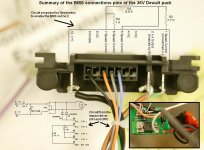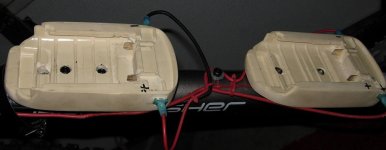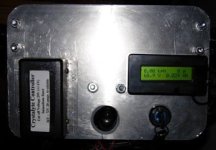Doctorbass
100 GW
This post is created to resume all great and true infos about the Dewalt 36V battery BMS wich ust the A123 LiFePo4 cells.
**I would keep this post clean and it would only contain info about test done with it that give real results for charging, discharging, or balancing or LVC.
Begining with:
How to enable it to use with a load without bypassing it and to keep the benefit of the Low Voltage Cutout (around 25V)(24.5V at 19A and 26.5V at 7A )
Here is a video of a test i did to see how the BMS LVC react with 1.5ohms load:
<embed src="http://www.youtube.com/v/vituFUmEnU8" type="application/x-shockwave-flash" wmode="transparent" width="425" height="350"></embed>
little sumarry image i created to give many info on how to use it with
**I would keep this post clean and it would only contain info about test done with it that give real results for charging, discharging, or balancing or LVC.
Begining with:
How to enable it to use with a load without bypassing it and to keep the benefit of the Low Voltage Cutout (around 25V)(24.5V at 19A and 26.5V at 7A )
Here is a video of a test i did to see how the BMS LVC react with 1.5ohms load:
<embed src="http://www.youtube.com/v/vituFUmEnU8" type="application/x-shockwave-flash" wmode="transparent" width="425" height="350"></embed>
little sumarry image i created to give many info on how to use it with




